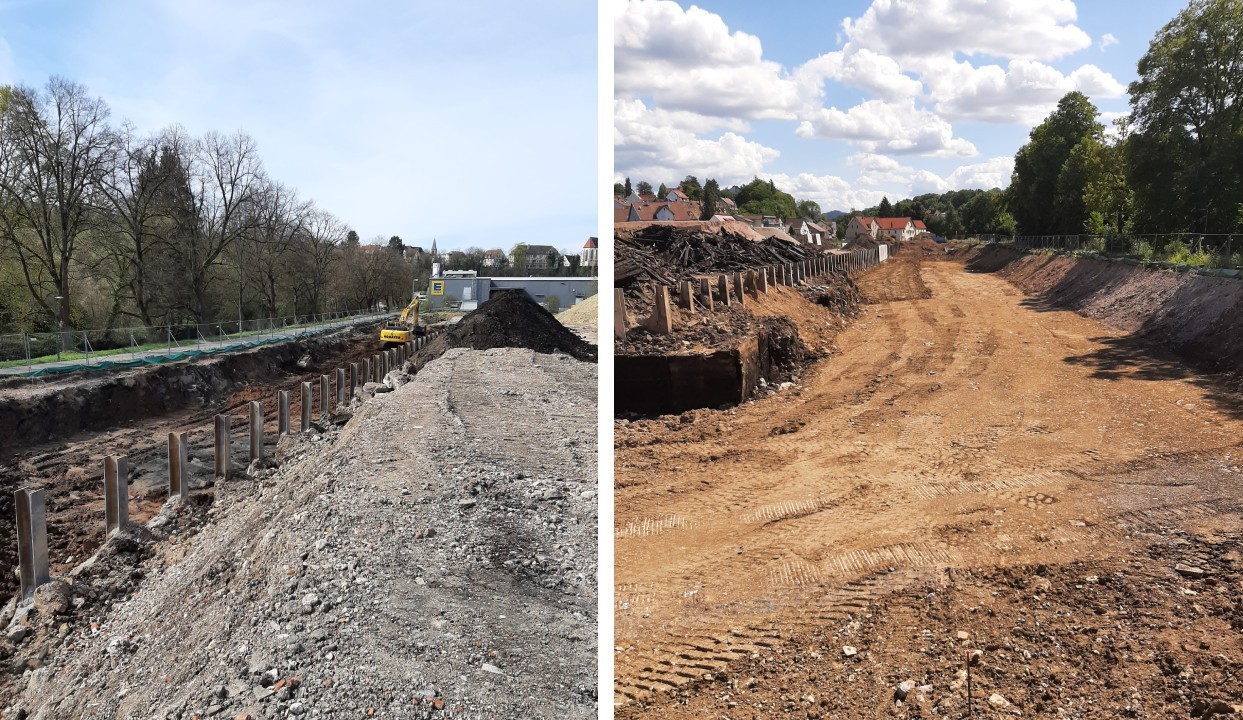DIBAG Industriebau AG from Munich is planning the development of the "Obere Walke" building area in Backnang with a mixed use of residential and commercial. Due to the former use of the area as leather factories, contaminations in soil and groundwater were found.
According to the flood hazard map, the planned construction site is partially within the floodplain of the adjacent Murr River in the event of a 100-year flood. Therefore, the planning provided for the construction of a retention swale and an additional retaining wall between the future residential area and the Murr watercourse. MuP Umwelttechnik GmbH from Heidelberg was commissioned with the expert monitoring of the earthworks and all work on the waste classification of excavated material.
In order to guarantee a harmless infiltration of rainwater in the retention area, the official requirement was to excavate all fill in the retention area. To achieve the planned bottom height of the retention swale, the potentially polluted fillings were removed layer by layer. The disposal costs could be optimised considerably by excavating and temporarily storing organoleptically conspicuous areas separately from inconspicuous areas under the expert supervision of MuP Umwelttechnik.
A total of approx. 30,000 m³ of soil material was excavated in the entire retention area covering an area of approx. 9,500 m². After completion of the excavation work, the retention area was divided into grids of 1,000 m² each. In the grid fields, excavator trenches were made up to the cut of the groundwater and samples were taken. The samples were analysed for the parameters of the Federal Soil Protection Ordinance (impact pathway soil - groundwater) to ensure the success of the remediation.
After a six-month construction period including the construction of the retaining wall and ensuring the success of the rehabilitation, the retention area could be handed over to the following trade.

